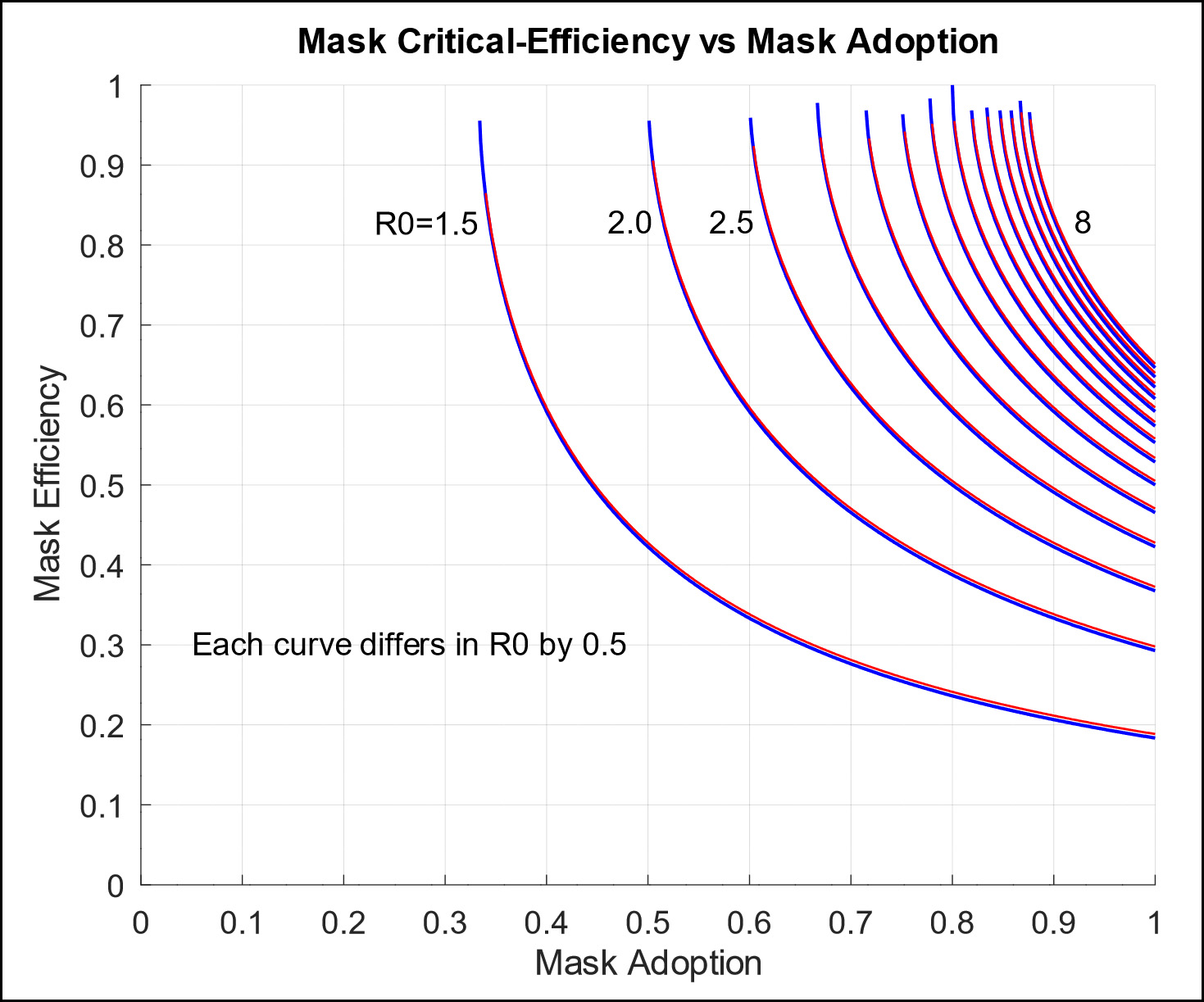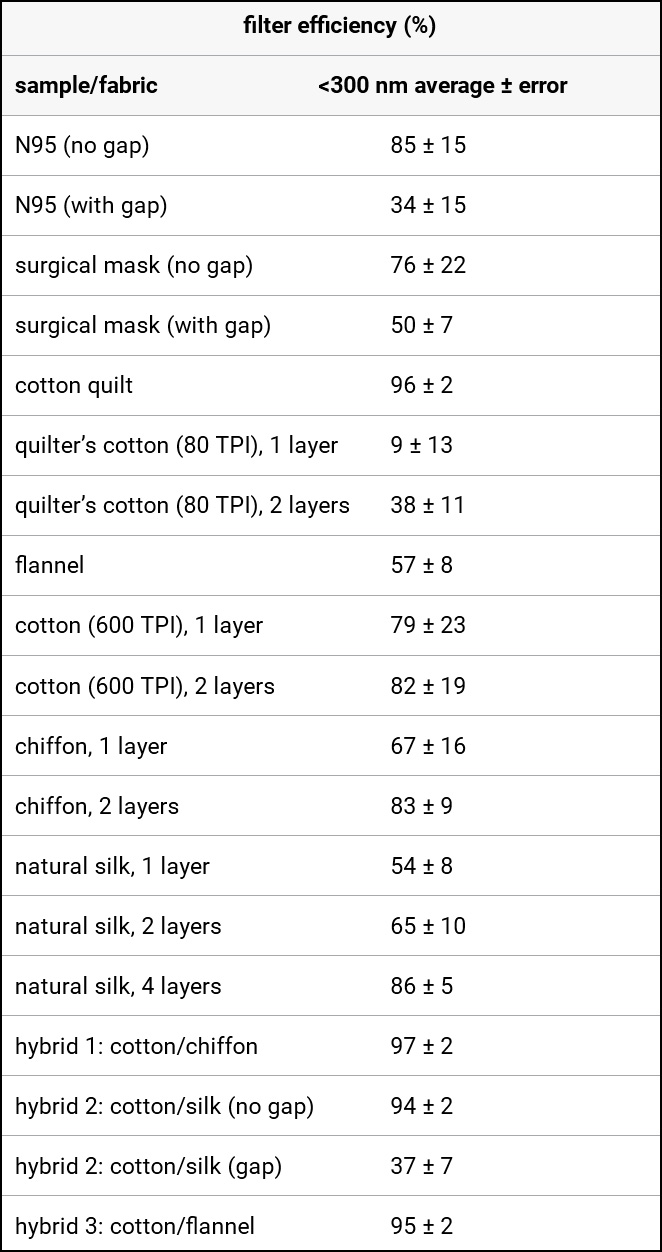Just how much mask-wearing do we need? That depends on how good our masks are. If they’re highly efficient, we can get by with fewer people wearing masks. If they’re not so great, we need a lot more people wearing them. Alan Kot has deployed a vast flotilla of Greek letters to come up with a theoretical model that produces this chart:

Each of these curves represents a disease with a particular value of R0 and shows what it would take to get R0 down to 1.0. COVID-19, for example, has an R0 of about 2.5, so take a look at that curve. On the bottom right, it shows that you can get this down to 1.0 with 100 percent of the population wearing masks that are about 35 percent efficient. At the top of the curve, you can achieve the same result with 60 percent of the population wearing masks that are 100 percent efficient. Anyplace else along the curve also works.
Fine. So how efficient are the cloth masks that we’re all wearing these days? I’m glad you asked:

The obvious problem with some of these is that, efficient or not, you’d barely be able to breathe through them. But how about silk or chiffon? They look to be about 50-60 percent efficient and are probably breathable. If we could get 80 percent adoption of masks like this, Kot says, that would be enough to get R0 below one and extinguish the the pandemic entirely.
Wear a mask! With the exception of 80 thread-per-inch quilter’s cotton, they’re all effective enough to make a difference.
UPDATE: I originally misinterpreted Kot’s chart. It’s corrected now.

















